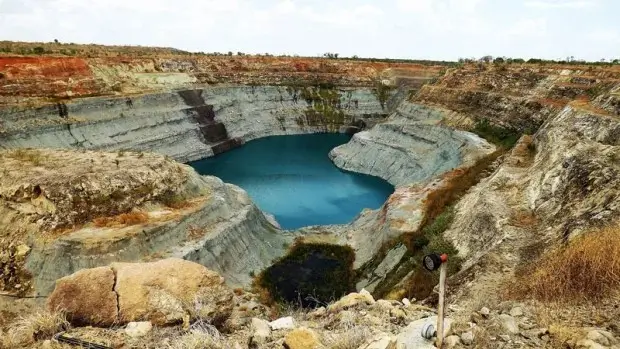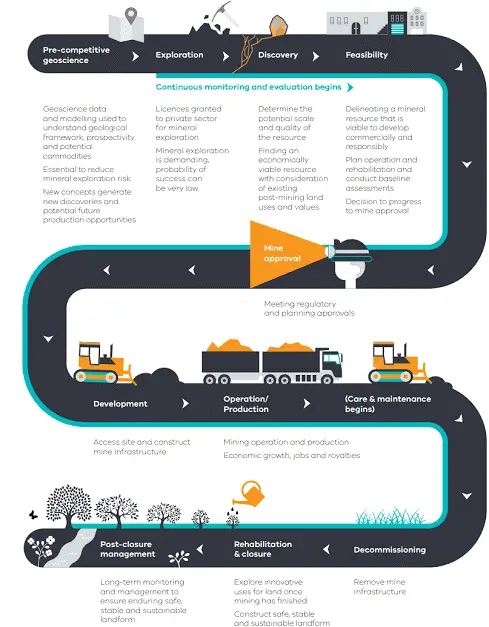Australia Turns to Abandoned Mines in Critical Mineral Race

Image: Aerial view of an abandoned mine site identified for resource reprocessing
Source: WAtoday
While global powers race to lock down reliable supplies of critical minerals, Australia is turning its gaze inward — to the forgotten treasure troves hidden in its many abandoned mine sites. Often seen as environmental burdens, these legacy operations may now hold the key to a new era of sustainable mineral recovery.
What was once waste is being reclassified as secondary resource potential, with researchers and junior explorers unlocking valuable metals from tailings, dumps, and forgotten shafts.
Focus keyword: Australia abandoned mine mineral recovery
What’s Driving the Shift Toward Abandoned Mines?
Rising demand for rare earths, lithium, cobalt, and other critical inputs has led to a global rush for exploration. But conventional greenfield discovery is costly, slow, and environmentally intensive. Enter Australia’s legacy mine network — dormant but geologically proven.
These sites, often operated prior to modern tech and regulation, still contain untapped ores or processable tailings rich in critical metals like scandium, tungsten, and vanadium.
Why These Sites Matter Now
- Known geology: No need for costly early-stage exploration
- Existing infrastructure: Roads, shafts, and even mill sites may be salvageable
- Tailings tech: Advances in geochemical modelling and reprocessing make recovery feasible
- Policy support: The government’s Mine Rehabilitation and Resource Recovery Initiative supports new exploration at historic sites
Case Study Potential: Turning Waste Into Value
One site in Western NSW, once mined for lead and zinc, is now under assessment for its tailings’ rare earth content. Early sampling suggests recoverable monazite and bastnäsite — both used in high-strength permanent magnets.
Similarly, in Queensland, an old gold mine is being scanned for tellurium and selenium, which were discarded as impurities decades ago but are now vital in solar panels and electronics.
Also Read: See how Australia’s critical minerals plan is evolving
Environmental and Economic Upside
The benefits of this new frontier aren’t just geological — they’re also ecological:
- Minimised impact on land, as existing sites eliminate the need for fresh land clearance.
- Lower water usage: Many sites have existing water systems or dry tailings
- Job creation in rural regions: Rehabilitation projects can reignite local economies
- Faster approvals: Governments often prioritise brownfield redevelopment
The Role of Technology in Modern Mine Reuse
AI-driven targeting, portable XRF scanners, and hyperspectral imaging are now being used to reassess waste rock and tailings at dozens of legacy sites.
Junior explorers are partnering with tech start-ups and universities to build cost-effective models that guide drill programs, soil testing, and metallurgical analysis — all without traditional exploration costs.

Image: Rehabilitation Process of Old Mines
Source: Victorian Auditor-General’s Office
Challenges to Watch
While the potential is enormous, obstacles remain:
- Contamination risks: Some sites are toxic and require heavy remediation
- Data scarcity: Records from historical operations are often incomplete
- Ownership complexity: Some sites have unclear or multiple ownership claims
- Community buy-in: Local support is essential, especially in areas affected by legacy pollution
That said, firms that prioritise ESG standards and actively involve local communities are often seeing their projects greenlit more quickly.
Strategic Fit in Global Context
With international partners increasingly wary of supply chain volatility, Australia’s ability to supply strategic minerals from trusted soil is more valuable than ever. Recovered resources from abandoned sites could help feed:
- EV battery supply chains
- Wind turbine magnet manufacturers
- Aerospace alloy producers
- Defence tech integrators
Waste Isn’t Waste Anymore
What was once considered a legacy liability is fast becoming a strategic mineral bank. By applying modern technology to old ground, Australia is proving that resource innovation doesn’t always mean digging deeper — sometimes it means going back to where we’ve already been.
For explorers, investors, and policymakers alike, Australia abandoned mine mineral recovery isn’t just a concept — it’s an opportunity ready to be mined.

